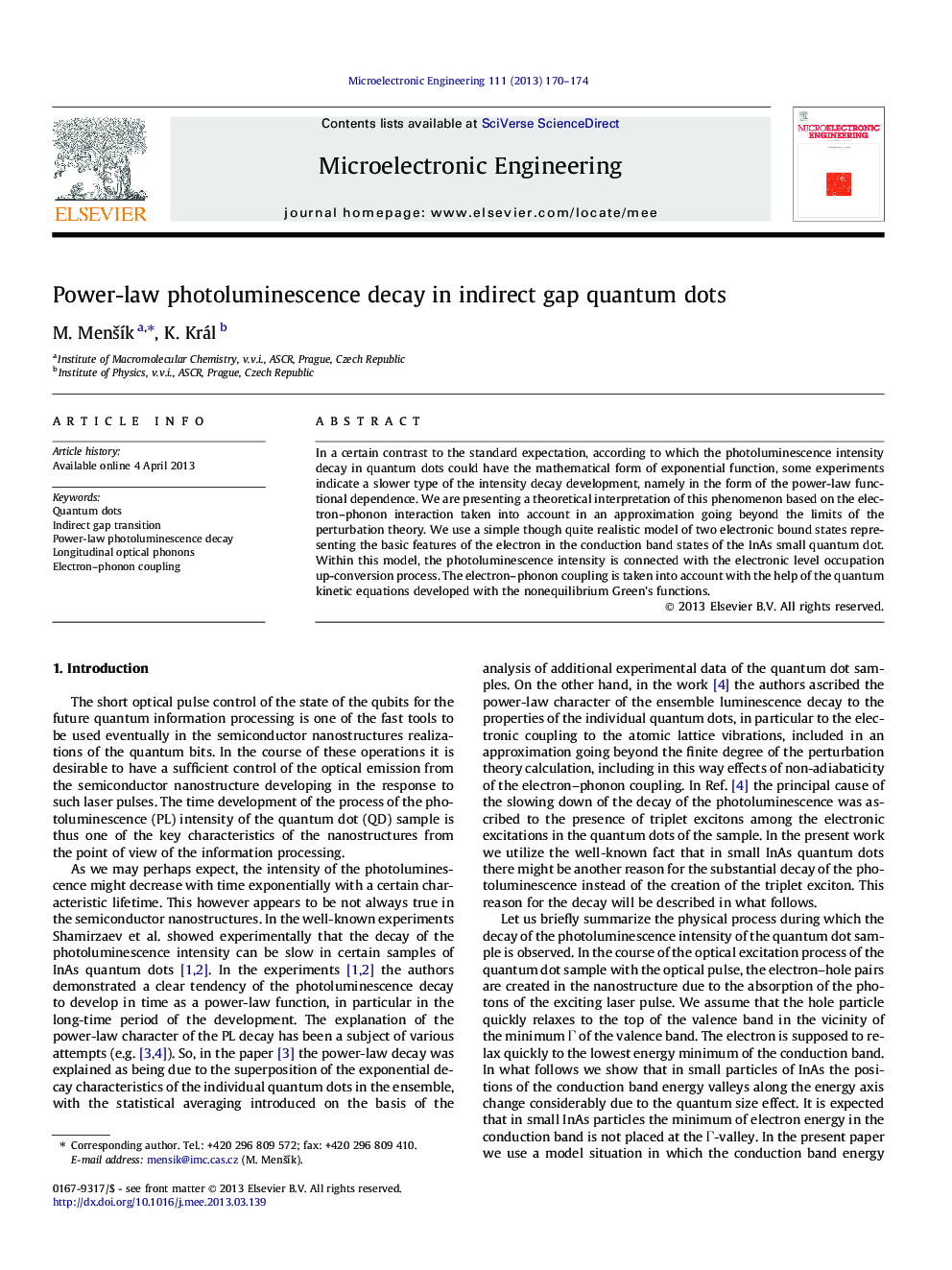| Article ID | Journal | Published Year | Pages | File Type |
|---|---|---|---|---|
| 539975 | Microelectronic Engineering | 2013 | 5 Pages |
•We model the photoluminescence decay in quantum dots.•We assume the indirect band gap transition controlled by longitudinal-optical phonons.•A power-law decay of the photoluminescence decay in quantum dots is found.•The photoluminescence decreases with increasing temperature.
In a certain contrast to the standard expectation, according to which the photoluminescence intensity decay in quantum dots could have the mathematical form of exponential function, some experiments indicate a slower type of the intensity decay development, namely in the form of the power-law functional dependence. We are presenting a theoretical interpretation of this phenomenon based on the electron–phonon interaction taken into account in an approximation going beyond the limits of the perturbation theory. We use a simple though quite realistic model of two electronic bound states representing the basic features of the electron in the conduction band states of the InAs small quantum dot. Within this model, the photoluminescence intensity is connected with the electronic level occupation up-conversion process. The electron–phonon coupling is taken into account with the help of the quantum kinetic equations developed with the nonequilibrium Green’s functions.
Graphical abstractFigure optionsDownload full-size imageDownload as PowerPoint slide
